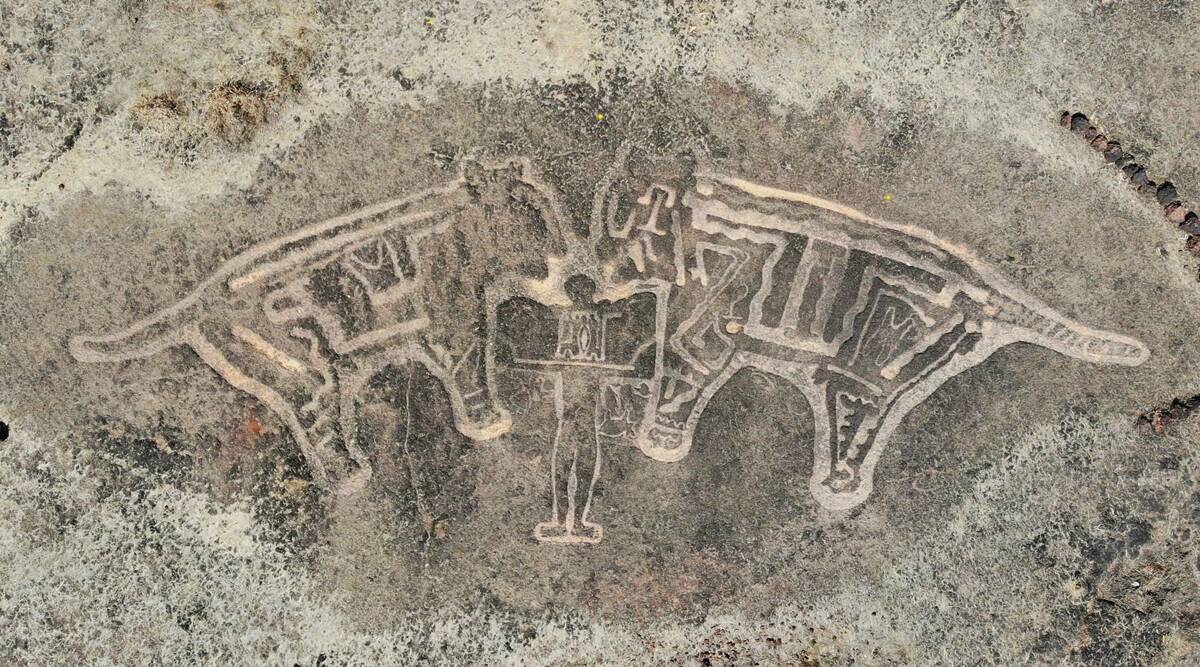Description

Copyright infringement is not intended
Context: The site proposed for a mega oil refinery in Barsu village of Maharashtra’s Ratnagiri district is at the centre of a row over whether it might damage ancient rock carvings found in the area.
Details:
- The rock art, or petroglyphs, estimated to be 20,000 years old and classified as protected monuments by the state archaeology department and the Archaeological Survey of India, have been added to the tentative list of UNESCO’s world heritage sites.
- Known as Ratnagiri oil refinery and petrochemical complex, the project is being developed by Ratnagiri Refinery & Petrochemicals Limited, a joint venture of Indian Oil Corporation Ltd, Bharat Petroleum Corporation Ltd and Hindustan Petroleum Corporation Ltd.
- The petroglyphs can be saved if the project is shifted 5-6 kilometres away from the sites.
- More than 250 petroglyphs have been identified in the area where the petrochemical refinery will be built.
- Petroglyphs and geoglyphs are considered assets across the world and cannot be shifted.
.jpg)
About:
- Petroglyphs are drawn by removing part of a rock surface by incising, picking, carving or abrading. Ratnagiri district has more than 1,500 petroglyphs, also called katal shilpa, spread across 70 sites.
- The carvings are in the shape of human figures, birds, animals and geometric forms, though they vary in shape and size from site to site.
- Seven sites in Ratnagiri district (Ukshi, Jambharun, Kasheli, Rundhe Tali, Devihsol, Barsu and Devache Gothane), Kudopi village in Sindhudurg district, and nine sites at Pansoimol in Goahave been added to the tentative list of UNESCO’s world heritage sites.
- A petroglyph is usually a prehistoric carving in a rock. Prehistory refers to the period of time before civilization and writing. There are only archeological sources available for prehistoric period which includes stone and bone tools, rock arts etc.
- The term rock art includes pictographs (paintings on rocks) and petroglyphs which are carved into the flat, open rock surface gives them a scale and look that is unique.
- Prominent petroglyph and rock art sites in India that could be contemporary to this period are the Bhimbetka rock shelters in Madhya Pradesh, rock carvings in Mirzapur in Uttar Pradesh, petroglyphs from the Tindivanam and Villupuram districts in Tamil Nadu and Unakoti in Tripura.
- The carvings on laterite stone make the petroglyphs in Ratnagiri region unique, as the carvings discovered in other sites around India are on granite and sandstone.

https://indianexpress.com/article/cities/mumbai/citing-damage-to-ancient-rock-carvings-experts-red-flag-mega-oil-refinery-project-8343904/
















